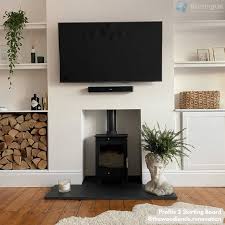When it comes to achieving a truly seamless and polished interior, few details make as much of an impact as matching your skirting boards and architraves. These architectural features might seem minor, but they bring harmony, structure, and flow to your home. Choosing the right combination ensures that every wall, door, and floor connects beautifully, creating a balanced and professional finish. In this guide, we’ll explore how to perfectly match your skirting and architrave to elevate your interior design effortlessly.
Understanding Skirting and Architrave
Before matching them, it’s essential to understand what each element does. Skirting boards are fitted along the base of walls to cover the joint between the wall and the floor. They protect walls from scuffs, hide uneven edges, and add a neat finishing touch. Architraves, meanwhile, are the mouldings fitted around doors and windows. Their purpose is to conceal gaps between the frame and wall while enhancing the overall look.
When both are carefully coordinated, they tie the whole room together, creating a sense of continuity and design harmony throughout your home.
Why Matching Skirting and Architrave Matters
Matching skirting and architrave isn’t just about visual appeal—it’s about creating balance and consistency. If your door frames and wall edges use clashing profiles or materials, the space can feel disjointed or unfinished. Coordinated trims, on the other hand, create flow and make interiors look thoughtfully designed.
When the styles complement each other, it also draws attention to the right areas—highlighting doors, framing walls, and giving rooms a sense of structure and proportion. Whether your style leans traditional or modern, matching skirting and skirting & architrave ensures your home feels unified and complete.
Choosing the Right Profile
The first step to matching your skirting and architrave is selecting the right profile. The profile is the shape or contour of the moulding, and it plays a key role in defining the character of a room.
For modern interiors, choose clean, simple profiles such as square edge, bullnose, or chamfered. These styles provide a sleek and minimalist appearance that fits contemporary homes perfectly.
If your home has a classic or period style, ornate profiles like ogee, torus, or lamb’s tongue add charm and sophistication. These designs feature elegant curves and detailed mouldings that bring warmth and traditional appeal.
Matching the same profile for both skirting and architrave ensures a consistent look. However, some homeowners prefer a subtle contrast—using a slightly simpler design for the skirting and a more decorative one for the architrave—to create gentle visual interest.
Matching the Material
The material of your skirting and architrave should also align for a smooth, cohesive finish. MDF (Medium Density Fibreboard) is one of the most popular materials because it’s durable, cost-effective, and easy to paint. It’s ideal for modern interiors and offers a consistent, smooth surface. MDF is also resistant to warping and cracking, which makes it perfect for long-term use.
For a more natural, luxurious look, solid wood options like oak, pine, or walnut are beautiful choices. They bring warmth and character, especially when stained or varnished to highlight the natural grain. If your home has high moisture areas like bathrooms or kitchens, PVC or moisture-resistant MDF options are worth considering. Matching both elements in the same material helps maintain uniformity and ensures the same texture and finish across your home.
Colour Coordination
Colour plays a major role in how well your skirting and architrave blend with the rest of your interior. The most timeless and versatile option is white—it brightens the space and complements almost any wall color. For a seamless and modern effect, paint your skirting and architrave the same color as your walls. This makes the room look larger and more open.
If you want a more dramatic and stylish statement, choose contrasting colors. For instance, dark grey or black trims against light-colored walls can create a sophisticated and bold aesthetic. The key is to ensure both skirting and architrave share the same shade to maintain cohesion even when you use contrast as a design feature.
Sizing and Proportion
Getting the proportions right is just as important as matching styles and colors. The height of your skirting boards should complement the size of your room. In spacious rooms with high ceilings, taller skirting boards look more elegant and balanced. In smaller rooms, opt for shorter skirting to maintain the right proportions.
Your architrave should also be proportional to your doors. Using an overly thick or thin architrave can make doorways look awkward. Generally, a width of 70–90mm works well for most homes, but you can adjust based on your room size and skirting height to maintain harmony.
Installation Tips for a Flawless Finish
Once you’ve chosen matching designs, precise installation is key to achieving a seamless look. Always measure carefully and cut angles cleanly for corners and joints. Use high-quality adhesive or fixings to secure them firmly. Fill any gaps with caulk, then sand and paint for a smooth, even finish. If you’re using pre-primed MDF, it’s quick to paint and gives professional results with minimal effort.
Conclusion
Matching your skirting and architrave is one of the simplest yet most effective ways to create a cohesive and elegant interior design. By choosing complementary profiles, materials, and colors, you can bring harmony and structure to every room. These finishing touches might seem subtle, but they have the power to completely transform how your home looks and feels. Whether you prefer sleek modern lines or timeless traditional mouldings, well-matched skirting and architrave will always add that perfect finishing touch to your space.



